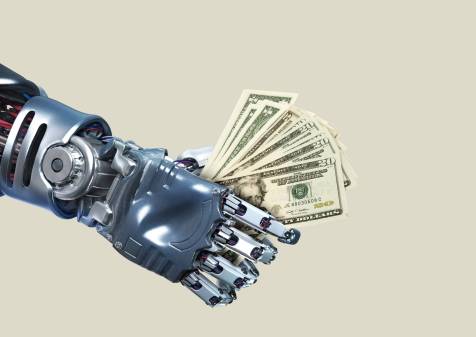- Sponsored
- AI
Agency leaders discover the power of AI to scale and support citizen services

Government agency leaders are discovering the power of AI and generative AI to empower their employers and support their efforts to provide new levels of services to constituents. For many of those leaders, the moment for AI is now as public sector leaders envision new ways to tackle the needs and expectations of citizens at an increasing scale with AI and generative AI.
During a session at Google Cloud Next ’24, leaders from Michigan, California and Wisconsin discussed how they have partnered with Google Public Sector to develop innovative AI solutions that are not only improving service delivery and efficiency for citizens but also paving the way for the future of government agencies.
That partnership transcends simply leveraging Google Cloud’s cutting-edge cloud technology. It also taps Google’s expertise and experience in the public sector. By helping agencies take their corpus of data and regulatory requirements and apply AI and Google’s secure cloud capabilities, agencies are overcoming many traditional staffing and budget hurdles by developing and deploying newly automated and scalable solutions that meet their constituents’ evolving demands.
Engaging Dearborn citizens with AI-assisted chatbots
When Abdullah Hammoud became mayor of Dearborn, Michigan, in 2022, he realized the urgent need for technological innovation, especially when it came to resident services and language accessibility. “There was no essence of technology innovation across the entirety of the city,” Hammoud said. For example, permitting was done by paper and submitted regardless of language barriers.
With a vision to “lead rather than lag behind the private sector,” Hammoud and his team embarked on a journey to revolutionize Dearborn’s operations.
With Arab Americans making up the majority of Dearborn’s population, according to the 2020 U.S. Census, being able to translate materials into Arabic was extremely important. In partnership with Google Public Sector, Dearborn launched a number of modernization efforts, including Wasta, an AI-powered chatbot that has multilingual support and streamlines resident interactions with municipal services. Additionally, Dearborn launched an AI-powered translation hub, which can translate city-related documents and other website materials to a resident’s language of choice.
Streamlining healthcare processes in California
Covered California, the state’s healthcare marketplace recognized the potential of AI to streamline critical processes and improve service delivery. By collaborating with Google Public Sector, Covered California is beginning to implement AI in the health insurance enrollment process, significantly reducing processing times and manual workload.
Among the changes: Implementing real-time document acceptance and identity and income verification. “Rather than waiting days, consumers are now getting a response in a matter of seconds,” said Karen Johnson, chief deputy executive director of Covered California.
In addition, Johnson discussed a proof of concept that Covered California launched for its call center, which has shown significant time savings. During peak periods, such as open enrollment, agents can take anywhere from 20,000 to 25,000 calls daily. With an average handling time of 20 minutes per call and over 1,000 agents potentially on the phone simultaneously, the process was time-consuming.
The AI solution introduced real-time transcription and call summarization, reducing agents’ average handling time. Instead of spending 20 minutes documenting each call, agents now only need four minutes. Diving deeper into the numbers, the initiative saves approximately 100,000 minutes or 1,600 hours of processing work per day during peak periods. “This enables agents to serve consumers much faster, leading to improved service delivery,” Johnson said.
Capitalizing on innovation in Wisconsin
Google’s experience with AI came at a critical moment for Wisconsin as it faced unprecedented challenges managing the surge of unemployment insurance claims in the early days of the COVID-19 pandemic. By September 2020, the state had a backlog of 770,000 claims. “There was a literal mountain of paper, and people were manually taking pieces of paper off and doing manual data entry,” said Amy Pechacek, secretary of the Wisconsin Department of Workforce Development. “I knew if we kept working this way, we’d be administering these claims and trying to get these benefits out for years.”
Partnering with Google Public Sector, Wisconsin developed “Judy,” an AI-powered adjudicator capable of efficiently processing unemployment claims with unparalleled efficiency. Google ingested millions of prior records to develop a template for analyzing and adjudicating claims. Judy’s ability to navigate complex eligibility rules and rapidly assess claims helped the state clear that backlog in a matter of weeks.
Since then, Wisconsin has partnered with Google on other AI-driven initiatives, including moving off its mainframe technology, launching a chatbot and virtual agents, and allowing residents to upload photos of documents instead of faxing them in.
The importance of partnerships in driving innovation
Central to the success of these initiatives is the emphasis on partnerships. Collaborating with industry leaders like Google Public Sector has enabled these municipalities and agencies to leverage cutting-edge solutions and overcome implementation challenges.
“So the thing that we have, in terms of the public sector, is when you partner with these individuals, we have the Google experience—we have the architects and engineers that are brought forth to the table,” Johnson said. “We’re actually able to leverage that experience so that they can deliver solutions that really meet the unique needs of our populations that we serve.”
In addition, working with Google’s partners helps support the acceptance and adoption of AI technologies among employees and other stakeholders.
“You really have to create that value proposition and demonstrate both to the public and to the employees on what the value-add is to the investment that you’re trying to make,” Hammoud said. “To help with this, we work closely with our Google partners and hold occasional sessions with our city council.”
The future of AI
Beyond streamlining existing processes, AI has the potential to revolutionize decision-making, resource allocation, and service delivery on a broader scale.
For Hammoud, the future of AI involves it becoming more task-oriented and capable of taking on more sophisticated tasks, whether that’s paying tax bills for residents or helping the city’s planners review housing plans. “This doesn’t reduce your workforce in any way,” he said. “It just makes your workforce more sophisticated, and it makes the whole process more pleasant and more efficient for the end user.”
As AI becomes more integrated into public sector work, employee education is also key. According to Johnson, Covered California is “taking a crawl-walk-run approach” to AI. While some of that involves training, part of it is also explaining to staff that AI will “augment human potential, not diminish it.”
Pechacek is also chair of Wisconsin’s Artificial Intelligence and Workforce Development Task Force. That team’s work not only involves making recommendations to the governor on AI policies and investments but also looking at the technology from an equity lens. “We are convinced that there’s a seat at the table of prosperity for everybody in our state who wants to be there and that we can use AI to bridge gaps that we previously had,” Pechacek said.
Learn more about how Google Public Sector can help your organization “Kickstart your generative AI journey.”
This article was produced by Scoop News Group and sponsored by Google Public Sector. Google Public Sector is an underwriter of AI Week.




